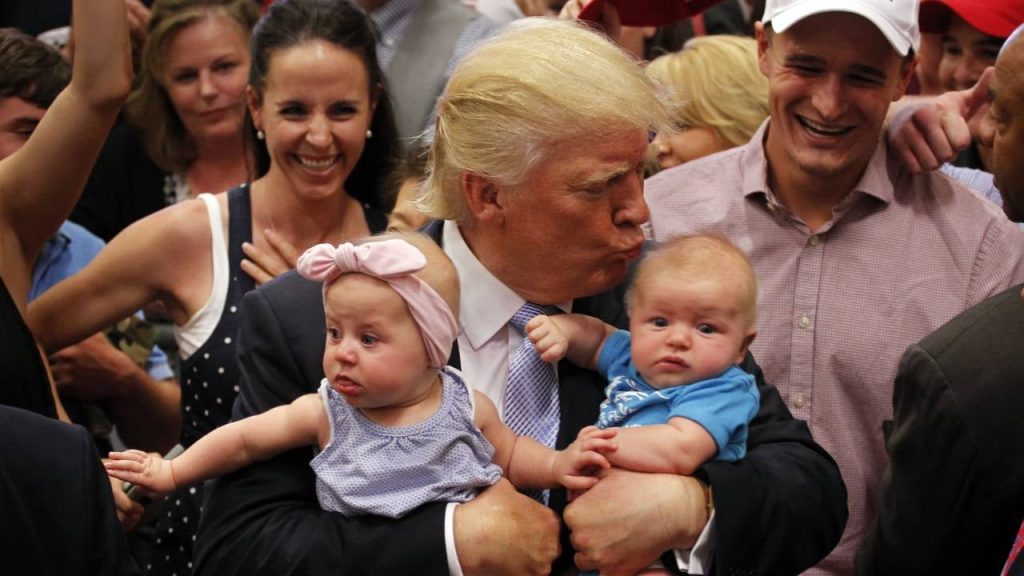President Donald Trump and American business leaders this week celebrated a provision in his tax bill that would create and fund investment accounts for babies born in the next few years. The accounts would be allowed to compound and grow tax-deferred, similar to the way some retirement accounts work.
“In addition to the substantial financial benefits of investing early in life, extensive research shows that children with savings accounts are more likely to graduate high school and college, buy a home, start a business and are less likely to be incarcerated,” Trump said. “Trump accounts will contribute to the lifelong success of millions of newborn babies.”
Here’s what you should know about these “baby 401(k)s” and how they compare to other savings plans for children.
Trump accounts: What they are and how they’d work
The so-called Trump accounts are part of Trump’s “One Big Beautiful Bill Act” that passed through the House of Representatives last month. Republicans are aiming to get the bill through the Senate and signed by Trump by July 4th. Here’s how the accounts would work:
- The federal government would contribute $1,000 to an investment account for every American baby born between Jan. 1, 2025, and Dec. 31, 2028.
- An additional $5,000 in after-tax contributions could be made annually to the accounts by parents, employers or other private entities.
- The money would be invested in index funds that track the overall U.S. stock market.
- Accounts would be controlled by a child’s legal guardians until age 18.
- Earnings would grow tax-deferred and qualified withdrawals would be taxed at the long-term capital gains rate.
“The compounded growth of an initial $1,000 investment at the time of birth, at an average annual return of 8 percent, would amount to nearly $4,000 by age 18, more than $10,000 by age 30, and over $148,000 by age 65,” according to Bankrate Chief Financial Analyst Greg McBride. “The key to achieving this type of growth is leaving the money untouched. As Warren Buffett espouses, ‘Never interrupt compounding.’”
Several business leaders praised the accounts and said they’d make contributions to their employee’s kids’ accounts.
“We see … the establishment of these Trump Accounts as a simple yet powerful way to transform lives,” Dell Technologies CEO Michael Dell said. “Decades of research has shown that giving children a financial head start profoundly impacts their long-term success.”
Trump accounts vs. 529 plans
Trump Accounts have some similarities with 529 savings plans, but there are some notable differences.
- Funding: Trump accounts would be initially funded by the federal government, while 529 plans are typically funded by parents, grandparents or other relatives.
- Withdrawals: Withdrawals from 529 plans are tax-free as long as they’re used for qualified educational expenses. Withdrawals from Trump accounts would have fewer restrictions on their uses, but are taxed at long-term capital gains rates.
- Contribution limits: Annual contributions for Trump accounts would be limited to $5,000, while 529 plans allow for up to $19,000 in contributions in 2025, or $38,000 if you file jointly, per child.
Here’s what else you should know about using a 529 plan to save for your kids’ education.
Trump accounts vs. custodial Roth IRAs
Custodial Roth IRAs also allow kids to set aside money and have it be invested so it grows over time. Here’s how they compare to the proposed Trump accounts.
- Earned income requirement: Trump accounts would be funded at birth and allow for additional contributions each year, while custodial Roth IRAs require a child to have earned income during the year in order to contribute.
- Contribution limits: Custodial Roth IRA contributions are limited to $7,000 in 2025, or the total amount of earned income a child has during the year, whichever is less. Trump accounts would allow for annual contributions of $5,000.
- Taxes on withdrawals: Withdrawals from Roth IRAs during retirement are tax-free, while withdrawals from the proposed Trump accounts would be taxed at the long-term capital gains rate.
Here’s more on custodial Roth IRAs.
Bottom line
The proposed Trump Accounts would create new investment accounts for every American baby born in the next few years, funded with $1,000 from the federal government. The accounts would be invested in index funds that track the U.S. stock market and could receive additional contributions each year of $5,000 from private entities. The plan is subject to change as the bill makes its way through the legislative process.
Read the full article here









